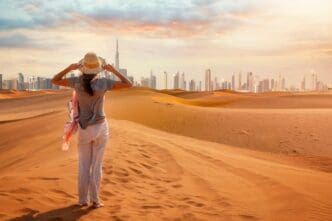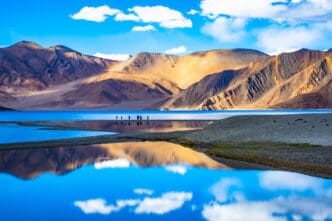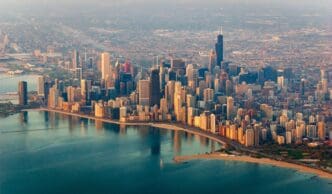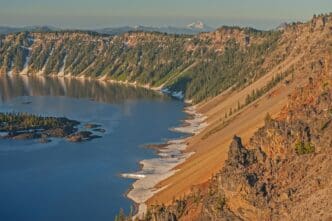For travelers seeking a direct link to the ancient world, a visit to the Pyramids of Giza offers an unparalleled experience, standing as the last remaining wonder of the ancient world. Located on the Giza Plateau just outside Cairo, Egypt, these monumental tombs, built for the pharaohs Khufu, Khafre, and Menkaure, have captivated humanity for over 4,500 years. The best time to visit is during the cooler months from October to April, and planning is essential for any visitor aiming to navigate the sprawling complex, understand the ticket options, and fully appreciate the architectural genius of the Old Kingdom while sidestepping common tourist traps.
Understanding the Giza Necropolis
The Pyramids of Giza are more than just three structures in the sand; they are the centerpiece of a vast complex of tombs, temples, and monuments known as the Giza Necropolis. This site was the royal burial ground for the pharaohs of Egypt’s Fourth Dynasty. Understanding its layout and significance is the first step to a meaningful visit.
The entire plateau was meticulously planned. The pyramids are aligned with incredible astronomical precision, and they are surrounded by smaller “queens’ pyramids,” mastabas (flat-roofed tombs) for nobles, and causeways leading to valley temples where funerary rituals were performed.
The Three Main Pyramids
The Giza Plateau is dominated by three primary pyramids, each a testament to the power and ambition of its builder.

The Great Pyramid of Khufu is the largest and oldest of the three. Originally standing at 146.6 meters (481 feet), it was the tallest man-made structure in the world for over 3,800 years. It is an architectural marvel, constructed from an estimated 2.3 million stone blocks.

The Pyramid of Khafre, Khufu’s son, sits on higher ground, giving it the illusion of being taller, though it is slightly smaller. It is the only pyramid at Giza to retain a portion of its original polished limestone casing at its apex, offering a glimpse of how magnificent these structures once looked.

The Pyramid of Menkaure is the smallest of the three, but it features more complex and intricate construction in its mortuary temple. Its lower courses were originally cased in red granite, contrasting with the limestone of the upper sections.
The Great Sphinx and Valley Temple
Guarding the pyramids is the enigmatic Great Sphinx of Giza, a limestone statue of a reclining sphinx, a mythical creature with the body of a lion and the head of a human. Believed to represent the Pharaoh Khafre, it is a monolithic sculpture carved from the bedrock of the plateau.

Directly in front of the Sphinx is the Valley Temple of Khafre. This remarkably well-preserved temple, built from massive granite blocks, is where the pharaoh’s body would have been prepared and purified before being carried up the causeway to the mortuary temple and his final resting place within the pyramid.
Planning Your Visit: Logistics and Tickets
A successful trip to the pyramids requires careful planning, from transportation to ticket purchases. Getting the logistics right will save you time, money, and stress, allowing you to focus on the wonder of the site.
Getting to the Giza Plateau
The Giza Plateau is approximately 18 kilometers (11 miles) from Downtown Cairo. The easiest and most recommended way to get there is by using a ride-sharing app like Uber or Careem. These offer a fixed, upfront price and eliminate the need for haggling with taxi drivers.

Alternatively, you can hire a taxi for the day or join a guided tour. A guided tour is an excellent option for first-time visitors, as it typically includes transportation, a licensed Egyptologist guide, and ticket arrangements, providing valuable context and history throughout the day.
Tickets and Opening Hours
The Giza complex generally opens around 8:00 AM and closes at 5:00 PM in the summer, with slightly shorter hours in the winter. It is crucial to buy your tickets only from the official ticket windows at the two main entrances: one near the Great Pyramid and the other near the Sphinx.
You will need a general entrance ticket to access the Giza Plateau itself. This allows you to walk around the pyramids, see the Sphinx, and explore the Valley Temple. Separate, additional tickets are required if you wish to enter any of the three main pyramids. These tickets are limited in number and often sell out, so arriving early is highly recommended if this is part of your plan.
The Experience: What to See and Do
Once inside, the scale of the site can be overwhelming. Having a clear plan of action will help you make the most of your time.
Should You Go Inside a Pyramid?
The experience of entering a pyramid is a memorable one, but it’s not for everyone. The passages are extremely narrow, low-ceilinged, and steep. The air inside is often hot, humid, and stale. Visitors who are claustrophobic, have mobility issues, or suffer from respiratory or heart conditions should avoid going inside.
If you choose to enter one, the Great Pyramid of Khufu offers the most extensive journey, leading up the Grand Gallery to the King’s Chamber. The other pyramids offer similar, albeit less complex, experiences. For many, the true marvel is the exterior architecture, and the interior chambers are stark and empty.
Finding the Best Photo Spots
For the iconic shot of all the pyramids lined up, you must head to the Panoramic Point. This viewpoint is located on a desert rise to the south of the main complex. You can walk, but it’s a considerable distance in the heat. The most common way to get there is by hiring a camel or a horse-drawn carriage from the official stables located near the Pyramid of Khafre.

Another classic photo is the “kissing the Sphinx” shot, which you can frame from the viewing platform next to the monument. The morning light is generally best for photographing the east-facing Sphinx, while late afternoon provides a beautiful golden glow on the pyramids themselves.
Camel Rides and Animal Welfare
A camel ride with the pyramids as a backdrop is a quintessential Egyptian experience for many tourists. However, it’s essential to approach this with caution. Always use the officially sanctioned operators and negotiate the price beforehand. Confirm the currency, the duration of the ride, and exactly what is included to avoid disputes later.
Travelers concerned about animal welfare should observe the condition of the animals. Look for camels that appear healthy and well-cared-for. If you have concerns, consider walking or hiring a carriage instead.
Essential Tips for a Smooth Visit
Navigating the Giza Plateau comes with unique challenges, primarily the intense sun and persistent touts. Being prepared is key.
What to Wear and Bring
Comfort is paramount. Wear lightweight, breathable clothing that covers your shoulders and knees to be respectful of the local culture and protect yourself from the sun. Sturdy, comfortable walking shoes are non-negotiable, as you will be covering a lot of ground on uneven, sandy terrain.
A wide-brimmed hat, sunglasses, and high-SPF sunscreen are essential. Bring a large bottle of water to stay hydrated; while you can buy it on-site, it will be much more expensive. Carrying some small Egyptian pounds is also wise for tips (baksheesh) and small purchases.
Dealing with Touts and Scams
You will encounter numerous vendors and touts at Giza. They can be very persistent in trying to sell you souvenirs, offer “free” gifts that come with strings attached, or act as unofficial guides. The best strategy is a polite but firm “no, thank you,” or “La, shukran” in Arabic, and to keep walking.
Be wary of anyone who approaches you away from the official ticket office claiming to be an official or inspector asking to see your ticket. Never hand your ticket to anyone except the uniformed staff at the official checkpoints.
Beyond the Main Site
To round out your Giza experience, consider activities that take place after the main complex closes for the day.
The Sound and Light Show
Each evening, the pyramids and Sphinx are brought to life in a spectacular Sound and Light Show. Spectators sit in a large outdoor theater facing the monuments as lasers and lights illuminate the structures. A dramatic narration tells the story of ancient Egypt, with the Sphinx acting as the storyteller.
While some find the show’s script a bit dated, seeing the pyramids lit up against the night sky is an unforgettable sight. It provides a completely different perspective on these ancient wonders.
A visit to the Pyramids of Giza is a journey back in time, a chance to stand in the shadow of giants and touch a piece of human history that has endured for millennia. By planning ahead, arriving early, and being prepared for the environment, you can ensure your visit is not just a tourist stop, but a profound and awe-inspiring adventure. It is an experience that stays with you long after you’ve brushed the desert sand from your shoes.








